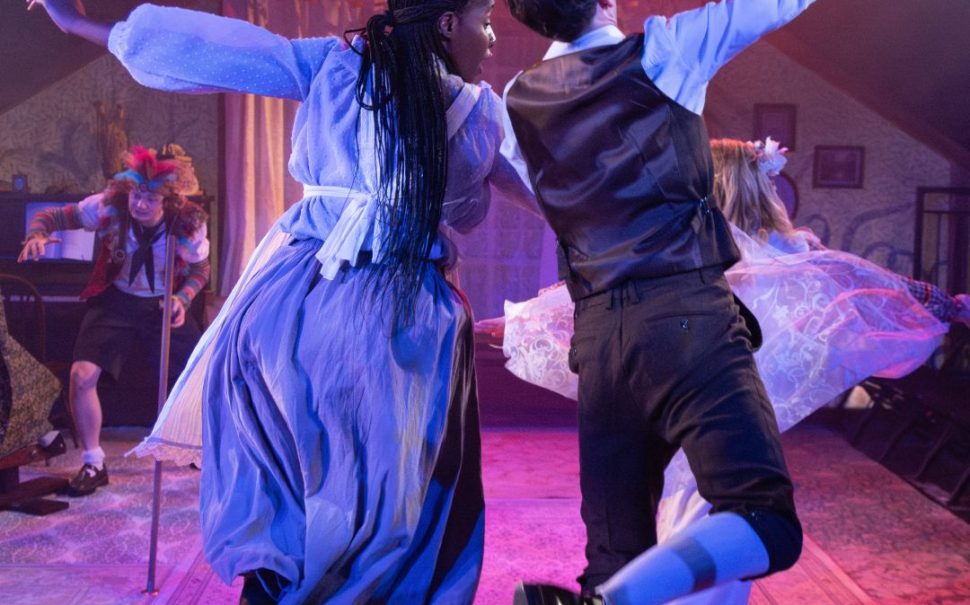Usually the Shakespeare classic A Midsummer Night’s Dream is as fun as it is convoluting – however the Southwark Playhouse ensemble successfully dismantle it, making it both accessible and relatable to young audiences.
I spoke to actor Andy Umerah (who plays Oberon) who told me the director, Toby Hulse, maintained a “fun and playful environment in rehearsals” and emphasised the “accessibility” of the production.
The positivity of the rehearsal process shines through in the production as the actors bring buckets of energy, enthusiasm and joy to their characters.
Hulse takes a risk in his unusual adaption of the classic, setting it in the context of six Edwardian children creating a performance for their granny which turns into A Midsummer Night’s Dream through their imaginative processes.
This manifests itself in semi-regular breaks in the play to explain what is happening in plain English under the guise of the ‘children’ imagining what is next.
This is a risk that pays off as it explains to an unfamiliar audience what is happening in the plays three simultaneous plot lines.
Furthermore, this production relies heavily on slapstick, physical theatre and light comedy which helps ground it for audiences both familiar and new to the text.
There is a playful yet minimal element of audience participation and some fun breaking of the fourth wall. However, I would say the shock value of breaking the fourth wall wares off slightly as it is a tad overdone towards the end.
One of the most impressive elements of this play is the production team itself – there is some excellent set design by Georgie White and the lighting and sound by Will Monks and Fraser Owen creates a captivating atmosphere, really bringing the magic of the whimsical play alive.
All the actors brought buckets of energy and enthusiasm to their roles, however of particular note is Martin Bassindale with his performance of Lysander and Thisbe.
Bassindale takes charge of the stage and is clearly a natural comedic talent.
I also have to commend Dewi Wykes who threw himself into the role of the ‘very naughty fairy’ and had an impressive command of physical theatre.
I thought the romantic relationships between characters, such as between Tatania and Oberon, could have been slightly more workshopped for a more believable sense of love and romance between them.
However, considering all actors had the huge task of constantly flickering between two or more roles each this can be forgiven.
A Midsummer Night’s Dream is known for its ‘play within a play’ side plot which weaves in with the fairy love triangle.
While I thought the ensemble did an impressive job morphing in and out of their other roles to the acting troupe ‘the Mechanicals’, I thought the play within the play itself could have been slightly stronger.
For instance, as someone who is partial to Richard III, I enjoyed the reference to ‘a horse a horse my kingdom for a horse’ during Pyramus’ death scene – however I question whether younger audiences would be able to understand this quip.
Overall, I highly recommend this production for families and schools looking for a light-hearted, accessible and heartwarming rendition of the Shakespeare classic.
Featured image credited to Charlie Lyne





Join the discussion